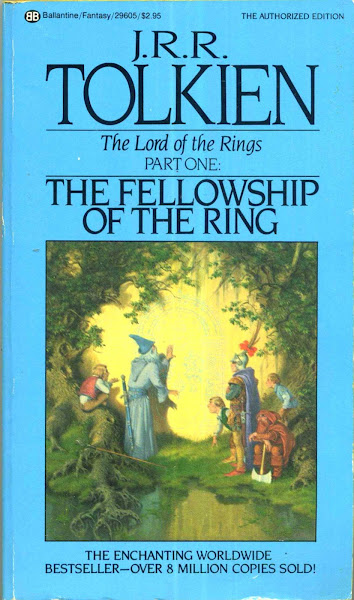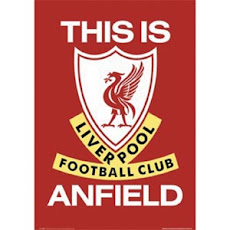This appears on philstar.com
Things we can learn
from the USMNT and their World Cup journey
by rick olivares pic by michael steele/getty images
The United States Men’s National Team ended their
stirring World Cup run in the second round following a stunning yet at the same
time thrilling match against Belgium where they lost 2-1 in extra time.
While the Americans ended exactly where they did four
years ago in South Africa with the same result, a 2-1 loss, there are plenty of
positive things to take away from their performance.
Critics might point out that the Americans struggled
to play that attack-minded football that Jurgen Klinsmann promised.
It was on display at kick off and towards the end of
the match against Ghana. It was there for the entire game against Portugal and
they showed their fight in the endgame against Germany and Belgium.
What they need to do now is play consistently for
long stretches.
But you can hardly accuse the Americans for
singularly struggling in the tropical heat.
Look who is out – Spain, Portugal, England, and Italy
went out with the Spaniards and England ousted after the second match. All four
of the countries are ranked higher than the US by FIFA yet they were all out.
And Klinsmann’s lads had better records than Spain, England, and Italy in this
world cup.
Spain scored four goals but conceded seven for a
negative three.
Italy scored two goals and conceded three for a
negative one.
England had two and four respectively for a
minus-two.
While Portugal scored four goals but gave up seven
for a goal difference of three.
The US? Five goals scored and six conceded. And a
goal difference of minus-two.
That is not so bad however you look at it.
The Philippines has some things in common with the
Americans. For starters, both sides are coaches by German-Americans in Thomas
Dooley and Klinsmann (who became an American citizen when he married an
American girl).
The sport is not tops domestically although it is
growing.
And some of the problems faced by the Americans are
the same thing Filipinos face.
Now since we are a former American colony and we
pretty much filched and copied everything they have in the States, what’s one
more thing to learn from the US side that – in the words of the New York Times
– won great “valor if not victory.”
It’s all
right to have a mixed lineup of locals and foreign-based players.
Klinsmann’s squad had six foreign-born Americans on
the team that initially drew a lot of concern from such luminaries as USWNT
player Alex Morgan who said on Twitter, “I really want to like Julian Green” after
the German-American took Landon Donovan’s spot on the team, and former national
coach Bruce Arena who took quite a few potshots at the US Soccer Federation for
the addition of the foreign players.
The world now knows that Julian Green came in and
scored off a brilliant chip by Michael Bradley. That goal sparked the US and
gave them their second wind. Given what he showed, he could be like what the
youthful Raheem Sterling is for England.
Another of the German-Americans, John Brooks scored
the match winner against Ghana.
Jermaine Jones was one of four Americans – the other three
are Tim Howard, DaMarcus Beasley, and Clint Dempsey -- who played consistently
for four matches. The German-American was simply a beast and an engine in the
midfield (Omar Gonzalez who came on in stoppage time against Portugal never
came off afterwards).
Another German-American who played well was Fabian
Johnson who gave the US so much pace and attacking promise against Portugal.
Conversely, looking at the Philippine Men’s National
Team, without a doubt, the foreign-based Filipinos have brought a lot of
quality to the national team and to local sides. They have significantly raised
the profile of football in our country.
Immigration and inter-racial marriages are the way of
the world. It is a phenomenon that has been around for close to 20 years.
The US brought in foreign-based players in 1994.
France featured a multi-racial squad in 1998 and they won the Euros and the
World Cup. Germany opened its doors in 2006 and have become a terrific and dynamic
team with their diversity. You have Brazilian-born players suiting up for Spain
and Croatia. I am sure by now you get the point.
The trick now is to find a delicate balance.
Current Philippines coach Thomas Dooley could be seen
at the Emperador Stadium watching UFL matches scouting for players.
Fourteen out of the 23-man roster that Dooley brought
for the AFC Challenge Cup ply their trade in the UFL. Of that 23, 18 are
Filipinos of foreign descent or who grew up abroad.
Breaking it down further, of that 23-man roster,
seven were in the lineup for the game-changing 2010 Suzuki Cup that opened up
the beautiful game to a larger audience in the Philippines. But curiously, of
that seven, only one (Anton del Rosario) played domestic football in 2010.
What that means is the other six are now playing for
local sides.
In contrast, Klinsmann’s World Cup team has nine
players coming from MLS squads with one playing across the border in Mexico.
Klinsi has made no bones about getting players who play in top sides in Europe
who are getting exposure and playing time.
If you compare that to the team that was handled by
Bob Bradley in South Africa, they only had four players coming from MLS squads.
And that brings us to the next thing that Filipinos
would do well to learn.
We need to
grow the domestic league.
In 1994, the US didn’t even have a professional
football league. FIFA was roundly scored for awarding the hosting rights to a
country that didn’t even have a pro league. FIFA was proven right when one sees
how the Americans have progressed in that time.
Now they have many players doing well overseas.
From 10 teams in its inaugural season in 1996, MLS
now has 19 teams – 16 based in the US and three in Canada. They are lined up
for further expansion.
If the MLS is Division One, the new North American
Soccer League is Division Two with 10 squads while the United Soccer Leagues is
the Third Division featuring 14 squads.
It is an incredible number given that the US has four
major sports – American Football, baseball, basketball, and hockey. And there’s
tennis that has always been popular. Now you can throw soccer into he mix.
In the Philippines, there’s the growing United
Football League that is now under the Football Alliance’s management for the
fifth year. There are 10 Division One squads and 11 in Division Two.
The great strides in Philippine Football has seen the
local and national sides perform well in the regional and international stage.
While football is growing, steps must be taken to
further ensure the viability of the UFL that is struggling with financial,
foreign-player, and organizational issues. But these are all part of the growth
of the sport. Without a doubt as the league continues to professionalize its
services and with the Philippine Football Federation pointing the sport in the
right direction, football will thrive.
It’s been four years since the Suzuki Cup of 2010, in
my opinion, it will take six to 10 more years before we fully realize the
sport’s potential.
Respect
what has been achieved before but that doesn’t mean a slot in the national team
slot is a given.
This is where Landon Donovan re-enters the
conversation. It is my personal belief that he should have been there. But it
is all moot and academic. Whatever reasons Klinsmann may have had, US soccer’s
leading goal scorer (57 international goals) did not play in Brazil that is
arguably his last.
But football is replete with famous snubs. David
Beckham was snubbed by Fabio Capello once more for South Africa (the Italian
also left him on the bench during their time at Real Madrid).
Ronaldinho also did not make the cut for Brazil in
2010.
Remember when Raul was cut by Luis Aragones for Spain
duty? There were howls of discontent but La Roja won the Euros and everyone was
silenced.
For this World Cup, Brazilian Philippe Coutinho, who
had a terrific season with Liverpool, was surprisingly left out. Atletico
Bilbao’s Aritz Aduriz scored 15 goals for his side this past La Liga season. In
stark contrast, Fernando Torres has only five goals for Chelsea in the Premier
League (11 for the year). And there’s Frenchman Samir Nasri who Didier
Deschamps left out because he felt the Man City midfielder would sulk if he was
left on the bench.
A coach put together lineups based on who he feels
will fit his system. Sometimes, some are brought along to soak in the
atmosphere and to learn from the experience so when their time comes, they know
what it will take. There may be an element of bias or prejudice here and there
but that is relative.
Before the AFC Challenge Cup, a former national
player asked Thomas Dooley if he could be included in the lineup. The coach
replied that he’d love to but he wanted to see him with a club so he could take
stock of what he could do on the pitch.
The Philippine Football Federation’s Aris Caslib, who
once coached the national side, said that new players are always added to the
mix to make way for new talent as the older ones end their tour of duty. This
is to ensure the transition as well as to give the younger ones a chance to be
mentored and to soak in the experience of playing with the older ones and the
high-level tournaments they participate in.
It is good to see Patrick Deyto get the chance to
play. If you never watched him play in the UAAP or the UFL you would never know
his quality.
While there were some early concerns about Amani
Aguinaldo’s sturdiness in the back (maybe that was due to his youth), he has
shown that he can be a force in the backline for the national team for years to
come.
Change is part of the national team.
We need to
get the whole country watching the national team.
In 1994, a young generation of Americans saw the
World Cup hosted on their shores. Tim Howard and Nick Rimando were 15 years
old. Beasley, Kyle Beckerman, and Brad Davis were 12. Clint Dempsey and Chris
Wondolowski were 11. Geoff Cameron was eight years of age.
That ’94 American squad got out of the group stage to
the Round of 16 where eventual champion Brazil tripped them up, 1-nil.
Nevertheless, the showing of the US, their win over
Colombia, their draw with Switzerland and their two plucky 1-nil loses to Romania
and Brazil, captured audiences and Americans everywhere.
Their strong play in the last two World Cups have
definitely earned the respect of the rest of the world.
When the 2010 Suzuki Cup team upended regional
powerhouse Vietnam in the second game of the group stages, news of their
exploits traveled quickly.
Crowds then began to come to the games. The
Philippines began to host exhibition matches, group stage matches, and World
Cup qualifiers. Some of the big names of the game began to come over.
This all shows that the game is alive and there is
interest.
But we need to get more people not only in the stands
but watching on television. Sometimes, I feel that private individuals and
corporations are doing more for the game.
However this isn’t time for finger pointing or
recriminations. There’s a lot to look forward to.
Like next year’s World Cup Qualifiers to Russia.










No comments:
Post a Comment